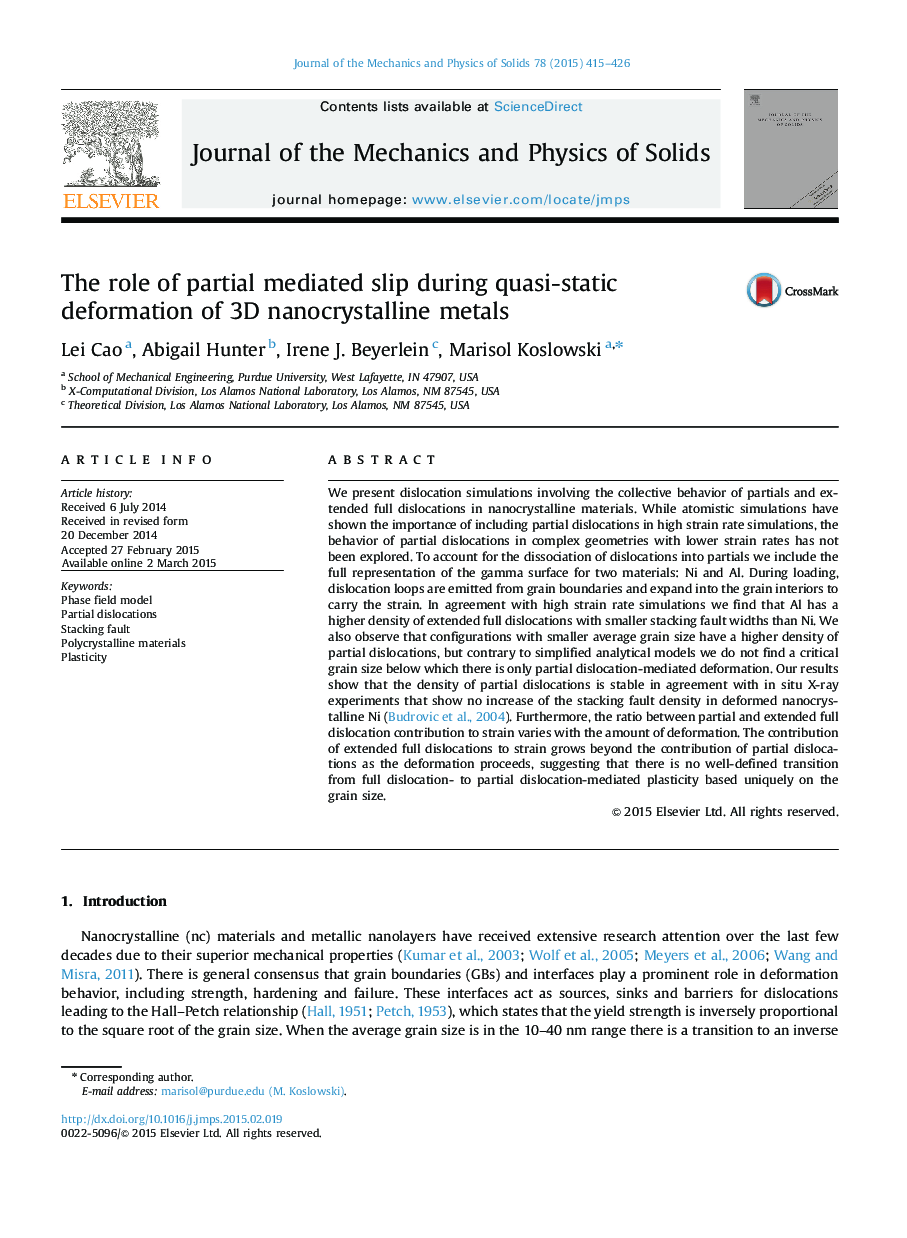| Article ID | Journal | Published Year | Pages | File Type |
|---|---|---|---|---|
| 7178077 | Journal of the Mechanics and Physics of Solids | 2015 | 12 Pages |
Abstract
We present dislocation simulations involving the collective behavior of partials and extended full dislocations in nanocrystalline materials. While atomistic simulations have shown the importance of including partial dislocations in high strain rate simulations, the behavior of partial dislocations in complex geometries with lower strain rates has not been explored. To account for the dissociation of dislocations into partials we include the full representation of the gamma surface for two materials: Ni and Al. During loading, dislocation loops are emitted from grain boundaries and expand into the grain interiors to carry the strain. In agreement with high strain rate simulations we find that Al has a higher density of extended full dislocations with smaller stacking fault widths than Ni. We also observe that configurations with smaller average grain size have a higher density of partial dislocations, but contrary to simplified analytical models we do not find a critical grain size below which there is only partial dislocation-mediated deformation. Our results show that the density of partial dislocations is stable in agreement with in situ X-ray experiments that show no increase of the stacking fault density in deformed nanocrystalline Ni (Budrovic et al., 2004). Furthermore, the ratio between partial and extended full dislocation contribution to strain varies with the amount of deformation. The contribution of extended full dislocations to strain grows beyond the contribution of partial dislocations as the deformation proceeds, suggesting that there is no well-defined transition from full dislocation- to partial dislocation-mediated plasticity based uniquely on the grain size.
Related Topics
Physical Sciences and Engineering
Engineering
Mechanical Engineering
Authors
Lei Cao, Abigail Hunter, Irene J. Beyerlein, Marisol Koslowski,
